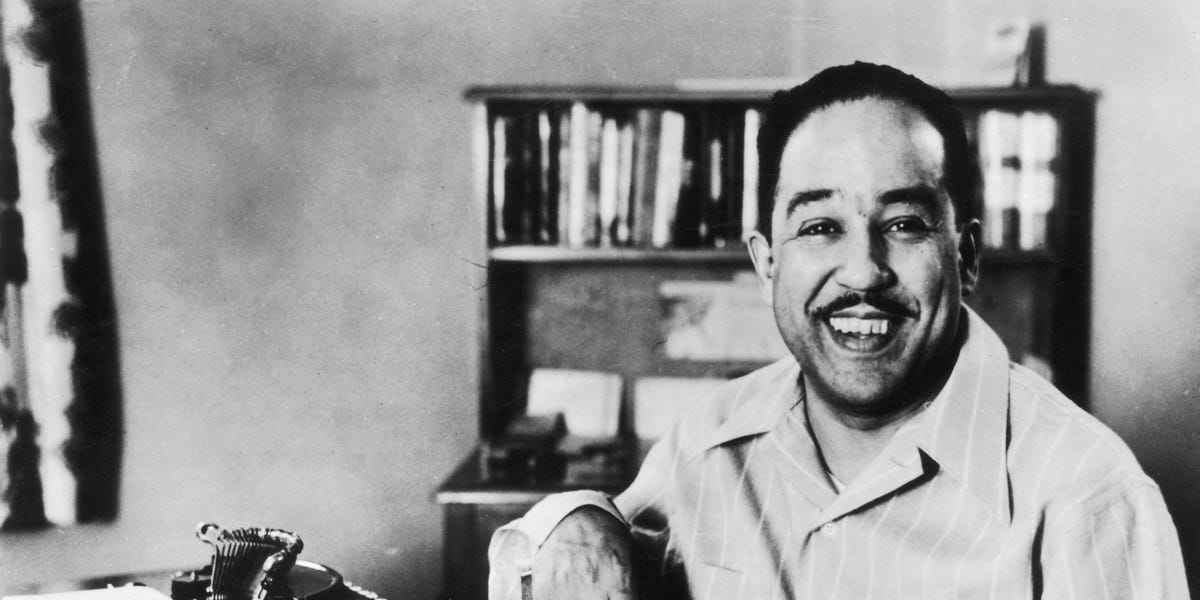Welcome to a journey into the heart of The Harlem Renaissance! This vibrant cultural movement swept through New York City in the 1920s and 1930s, celebrating Black art, music, literature, and intellectual thought. It was a time of immense creativity and change, where artists like Langston Hughes boldly challenged societal norms and demanded recognition for their unique voices.
At the center of this artistic Explosion Stood Langston Hughes, a poet, playwright, and novelist whose words captured the spirit of Black America with unmatched power and grace. He believed in the beauty and richness of Black culture, urging his fellow artists to embrace their heritage and express it authentically Through Their Work. Hughes’s poems resonated with people from all walks of life, bridging racial divides and illuminating the complexities of the Black experience.
His impact extended far beyond the Written Word. Through his captivating poetry readings and His Autobiography, “The Big Sea,” Hughes shared his personal journey and shed light on the struggles and triumphs of a generation striving for equality and recognition. His unwavering commitment to social justice and artistic expression helped shape the legacy of The Harlem Renaissance, leaving an enduring mark on American culture that continues to inspire us today.
Langston Hughes and The Harlem Renaissance
Langston Hughes wasn’t just a part of The Harlem Renaissance; he was one of its most Influential Voices. He believed deeply in the power of Black art to challenge stereotypes and celebrate the richness of African American culture. He urged artists to embrace their heritage and tell their stories authentically, without trying to conform to European standards. Hughes saw beauty in everyday life, in the rhythms of jazz music, and in the struggles and triumphs of ordinary people.
His poems often captured the energy and spirit of Harlem, a neighborhood teeming with creativity and Cultural Diversity. He wrote about love, loss, joy, and pain, exploring the full spectrum of human experience through a distinctly Black lens. Hughes’s work resonated deeply with readers, both within and outside the African American community, because it spoke to universal themes with honesty and authenticity.
 What Happened To Linda Lovelace: Rise, Controversy & Legacy
What Happened To Linda Lovelace: Rise, Controversy & LegacyHe became a central figure in The Harlem Renaissance scene, collaborating with other talented artists like Zora Neale Hurston, Alain Locke, and Countee Cullen. Together, they formed a vibrant community of writers, musicians, and intellectuals who pushed creative boundaries and challenged societal norms. Langston Hughes helped to shape the movement’S Legacy, ensuring that its message of Black empowerment and artistic excellence would continue To Inspire Generations To Come.
Embracing Black Identity in Art
Langston Hughes was a passionate advocate for Black artists to embrace their racial identity and express it authentically in their work. He believed that true beauty and power came from celebrating the richness and diversity of Black culture, rather than trying to imitate European styles or conform to white standards. Hughes challenged critics who dismissed Black art as derivative or lacking originality, arguing that it had its own unique voice and perspective waiting to be heard.
He encouraged artists to depict everyday life in Black communities, to explore the complexities of the Black experience, and to tell stories that reflected the joys, sorrows, struggles, and triumphs of their people. Hughes believed that art should be a mirror reflecting the world as it truly was, not a distorted image shaped by external pressures or expectations.
His own work served as a powerful example of this principle. He wrote about Black families, lovers, friends, and neighbors with honesty and empathy, capturing the nuances of their lives and experiences. Through his poetry, prose, and plays, Hughes helped to pave the way for a new generation of Black artists who would continue to explore and celebrate their heritage with confidence and pride.
Challenging Stereotypes and Promoting Diversity
Langston Hughes didn’t just want to create art; he wanted it to make a difference. He saw the power of storytelling to challenge harmful stereotypes and promote Understanding Between Different Cultures. He believed that by showcasing the diversity of Black experiences, both positive and negative, he could help break down prejudices and foster empathy among his readers. Hughes refused to let limited perspectives define or diminish the richness of Black lives.
His work often challenged prevailing stereotypes about Black people as lazy, uneducated, or criminal. Instead, he portrayed them as complex individuals with dreams, aspirations, and inner struggles just like anyone else. He celebrated their resilience, creativity, and intelligence, highlighting their contributions to American society in all its forms. Hughes’s commitment to diversity extended beyond race; he also championed the inclusion of Characters From Different Socioeconomic Backgrounds, religions, and sexual orientations, enriching his stories with a tapestry of human experiences.
By presenting a more complete and nuanced view of Black life, Langston Hughes helped to pave the way for greater acceptance and equality in American society. His work continues to inspire us today to challenge our own biases and celebrate the beauty of diversity in all its forms.
The Influence Of Travel and Collaboration
Langston Hughes’s experiences outside of Harlem deeply influenced his writing and outlook on the world. He traveled extensively throughout The United States and even abroad, immersing himself in different cultures and broadening his understanding of humanity. These journeys exposed him to a wider range of perspectives and stories, which he later incorporated into his work with sensitivity and insight.
Back in Harlem, Hughes thrived within a vibrant community of artists who supported and inspired Each Other. He collaborated closely with writers like Zora Neale Hurston, Wallace Thurman, Gwendolyn Bennett, and Aaron Douglas, Exchanging Ideas, Critiquing Each Other’s work, and pushing creative boundaries together. This sense of shared purpose and mutual respect fostered a fertile ground for artistic growth and innovation within the Harlem Renaissance.
Through these collaborations and travels, Hughes gained a richer understanding of the world and its complexities, which he then channeled into his writing with honesty, empathy, and a powerful voice that resonated with readers far beyond Harlem.
Shaping a Lasting Legacy
Langston Hughes’s impact on American culture extends far beyond the confines of The Harlem Renaissance. His work continues to be studied and celebrated in classrooms and literary circles around the world. He helped to shape the modern understanding of Black identity and experience, paving the way for generations of writers, poets, and artists to explore their own voices with authenticity and pride.
His poems and stories continue to resonate with readers today because they speak to universal themes of love, loss, hope, and resilience. Hughes’s legacy is a testament to the power of art to transcend time and connect people from all walks of life. His words serve as a reminder that every voice deserves to be heard, and that diversity enriches our world immeasurably.
Through his enduring contributions to literature and culture, Langston Hughes left an indelible mark on American society, inspiring countless individuals to embrace their own identities and strive for a more just and equitable world.










